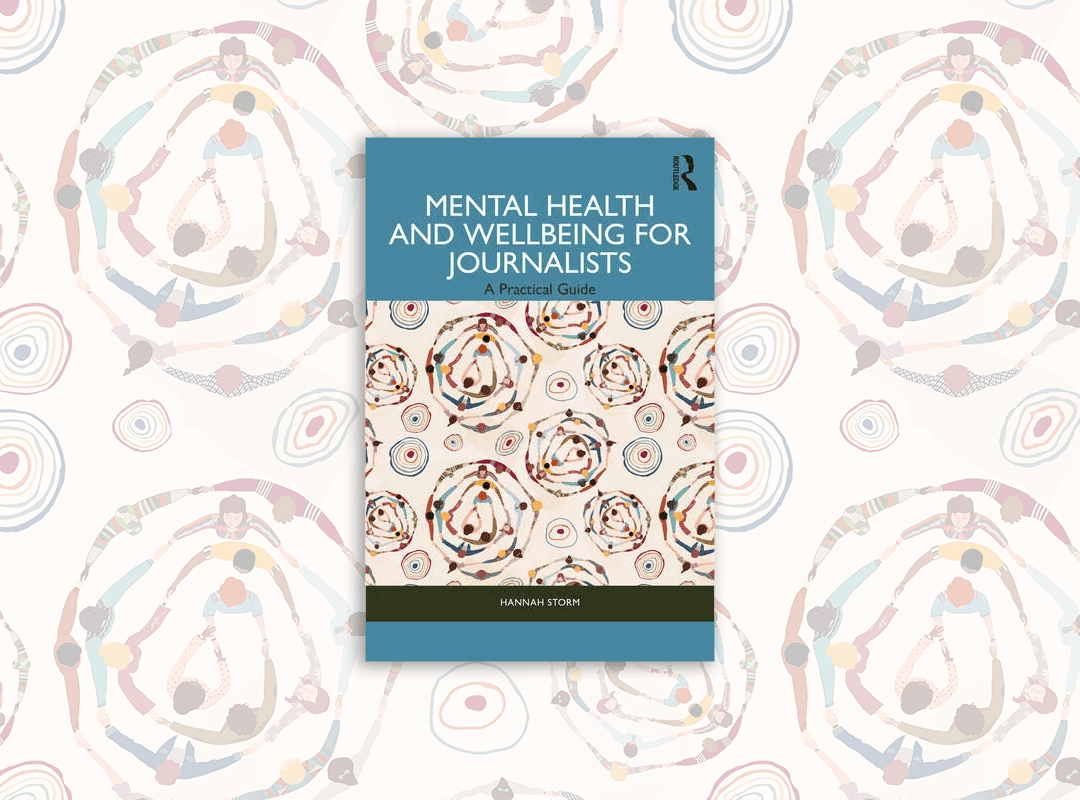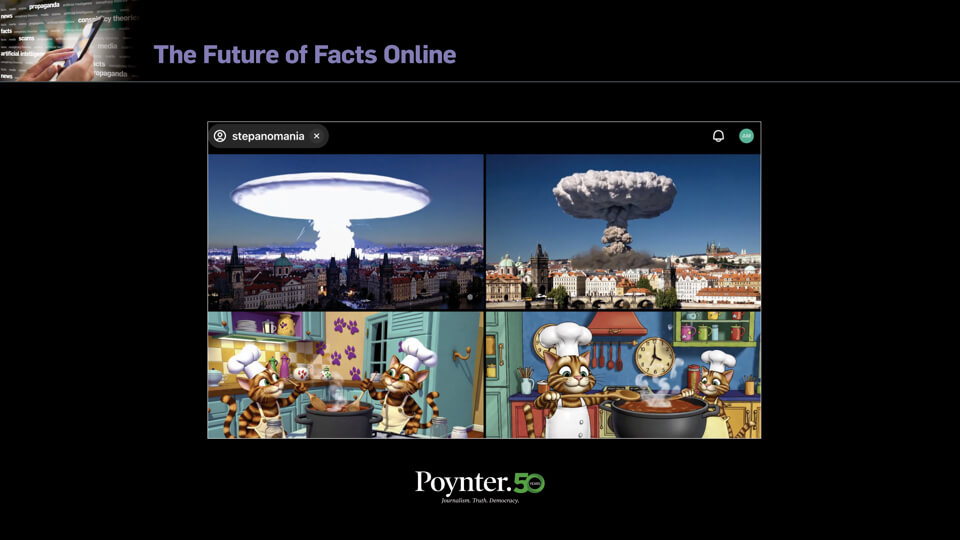When I was approached to write a book for journalists about mental health almost two years ago, I needed no convincing about the importance of these conversations. Little did I know how even more timely it would be at its publication now.
Since first speaking openly about my own diagnosis of post-traumatic stress, I’ve been a passionate advocate of the need to normalize conversations in our industry, someone who believes too few are taking seriously the impact of journalists’ work on their well-being, and too many are ignoring how risks the health of our profession, and by extension the role it plays in wider society.
“Mental Health and Wellbeing for Journalists: a Practical Guide” is published by Routledge this week, May 24, 2024, at a time when the levels of stress and pressure faced by many of our colleagues need to be taken far more seriously than they have been to date.
In writing the book, I was privileged to interview more than 40 people from around the globe, amongst them journalists and media executives, mental health experts and others who became passionate about this issue, like me, because they had been injured by the industry we love. All of them agreed to speak on the record.
For a subject that is often steeped in stigma and shame, this is quite something. Their insights are threaded through the book and I incorporate the stories of more than a dozen of them as case studies, because — if I hadn’t been convinced already by the reaction to my own story-sharing — researching the book reinforced the power of storytelling.
The importance of storytelling is not the only key lesson from the book, which charts the history of conversations around mental health and journalism, considers some of the taboos that exist globally, and explores how many journalists have been conditioned to suppress their experiences and how that has led in some places to toxic work cultures and unhealthy coping.
It explores how our bodies and brains respond when exposed to trauma and danger, noting that it’s normal for us to react in such situations.
It explains how research shows journalists are resilient, but the nature of our work puts us at greater risk than the general population to mental health impacts.
It reminds us that many of us are drawn to journalism because we are passionate about holding power to account and fighting injustice, and offers a reminder that acknowledging why we do this work: “bearing witness,” being a phrase often used, can be very protective.
But it also sounds a warning, lest we become defined by our work, wed to it, so fixated on it that there is no space for anything outside of it.
The book discusses specific issues such as vicarious trauma — which has increased in recent months with so many journalists exposed to the cumulative impact of frequent exposure to distressing content. It also explores the idea of moral injury, which is not a mental health condition but can be a pathway to post-traumatic stress disorder if not addressed properly, which journalists may experience if they feel betrayed by those who manage them. It discusses the changing nature of online harassment, and the devastating toll it takes on many journalists, specifically women.
“Mental Health and Wellbeing for Journalists: a Practical Guide” offers practical tips for all these areas, sharing insights and anecdotes from across the globe, as it recognizes how mental health in journalism has often been seen through far too narrow a Western lens, and offers lessons from colleagues from cultures where journalists may be exposed to almost daily trauma, and where taboos are so entrenched that the idea of mental health is best approached through conversations around physical safety. The book includes chapters on self-care and supporting colleagues, but also recognizes that we need to know we are supported by our newsrooms, suggesting practical approaches to this.
Many newsrooms have long been places where admissions of vulnerability are frowned upon. One of the most commonly repeated concerns I heard was the fear that admitting an impact on one’s mental health would negatively impact a colleague’s reputation, their next deployment, their career advancement. For those who do not see themselves represented at senior levels of newsrooms, or for those experiencing job insecurity, that fear is exacerbated, but even for those in the highest levels, it’s there.
, “I’ve had some of the most senior people at CBC and at other news organizations in Canada confide that if I were to be open in my workplace, about my mental health struggles that related either to my work or my own personal life, it would be a career killer,” Dave Seglins, a journalist and well-being champion at CBC in Canada, told me. “I would no longer be on those big assignments; they would work around me and I would sort of get drummed out.”
Very simple gestures can make a very large difference. Journalists want their managers to recognize the work that they do sometimes does take a toll on them.
They’re not snowflakes, a term I hear often and find extremely pejorative. Generally, they can’t imagine and wouldn’t want to do any other job. They’re drawn to journalism because they believe passionately in fighting injustice and holding power to account. They’re human beings who — over the course of the past few years — have been faced with an accumulation of stressors and traumas that have eroded their resilience. They want news leaders to recognize they are human beings, not cogs in a machine, and that in a world of increased demands and reduced resources, it’s the human beings who are journalism’s most precious resource who are hurting and who want to be heard.
Sarah Ward-Lilley, MBE, is a former managing editor of BBC News, was awarded her MBE — an honor from the British monarch — in recognition of her services to mental health in journalism.
“It has to be a positive, that we are managing and working with human beings, who are doing journalism and taking their humanity into their stories,” she said. “They can still be impartial, if that’s what’s required. They can still be highly professional. They can do their jobs better, if they are supported in their emotional life.”
Empathy is an important part of journalism, allowing us to connect with the people whose stories we share and amplify. But in an environment where the capacity for breaking news is limitless, where deadlines and targets and external pressures up the ante, it can be hard for managers to exercise empathy especially when they might be stuck in their own stress sandwich. In the book, I note:
Empathy in leadership is crucial to creating and sustaining effective and inclusive cultures. Empathy does not divest us of efficiency. Instead, when it becomes part of a culture, it’s more likely to encourage it. Empathy helps us recognise that we all go through stuff and that sometimes it is good to have company in the darkness, without that person trying to provide a crutch or a solution to someone’s problems.
Many newsrooms are now made up of four generations of journalists: boomers, Gen X, millennials and Gen Z, each of whom have different expectations and experiences. While there is often a disconnect between these different generations, there’s also an opportunity for us to learn from each other.
Managers are caught in a stress sandwich, many of them still feeling as if they have nobody who will support them, worried about the fact they don’t have the tools or time to check in with those they oversee, concerned that they don’t know what to say and so short of time they rarely have any for themselves.
Often they grew up in newsrooms that forced them to suppress their feelings, to put up and shut up. Meanwhile, newer entrants to the industry have joined journalism at a time of great flux and insecurity, some of them starting their careers during the pandemic, doing so without the support and mentorship that their predecessors benefitted from, and without any training and support to help them understand the kinds of stories — and with them stresses and trauma — they might be exposed to.
Many journalists from Generation Z come with a far more advanced literacy around mental health than previous generations, and significant expectations around the need for their workplaces to see their psychological well-being as just as important as physical health. Many also have established boundaries which older folks may interpret as a suggestion that having any kind of life outside of journalism is a lack of commitment. Many younger people have firm boundaries that others could benefit from themselves, but they also need support to help them identify what their own coping mechanisms are and what resources they can access within newsrooms. If this doesn’t happen, we risk people voting with their feet and we risk making our future newsrooms far less diverse and healthy places.
The social contract working in newsrooms is different from many other types of work and, because of this the way we relate to experiences and recover from experiences may be different, so too is the way we ought to relate to our colleagues from a mental health perspective. The very nature of news means we work on things that are outside the parameters of everyday experience. This may cause our worldview to shift, so we inhabit a different axis from those around us. Many of us may relate to the challenges of connecting with nonjournalists after a particularly harrowing story, of feeling frustration at the fact that the world continues to turn and the demands of daily chores and family life continue even as we return to a world that seems to have moved on from the story that sticks with us. It is hard. We gravitate towards those who speak our language, we suppress our pain and trauma through maladaptive behaviors — toxic coping mechanisms that turn us into bullies, or reliant on alcohol, or push us into self-sabotage. Fortunately, there is some progress being made, but it’s by no means fast enough.
Journalists are burnt out, heading towards breaking point.
They’re enduring moral injury because many feel unsupported or betrayed by the leaders of their news organizations.
They’re facing and responding to rising levels of polarisation in society, in their own communities, and even in their newsrooms.
They’re subjected to ever-increasing online violence which is intersecting with physical threats, and their work is compounded by disinformation that leaves them frequently grappling with who or what to believe.
They’re covering stories that expose them to danger and trauma, and being asked to watch, hear, read and edit graphic material repeatedly.
And all this is coming after several years of extraordinary stressors and demands that have brought a cumulative toll.
At a moment in our industry when we are faced with — what Phil Chetwynd, the global news editor for Agence France-Presse calls an “almost limitless capacity for breaking news,” — we have to make well-being a priority, before this breaking news breaks journalists. We know that it is good for people’s mental health to be able to step back from their work, to take breaks, to change stories, to ensure they do not do too much war and gore, but there doesn’t seem to be any room to give.
What writing the book taught me is that newsrooms need to take stock and shore up the well-being of their staff, because to not do so risks losing their most precious resource: their people.







